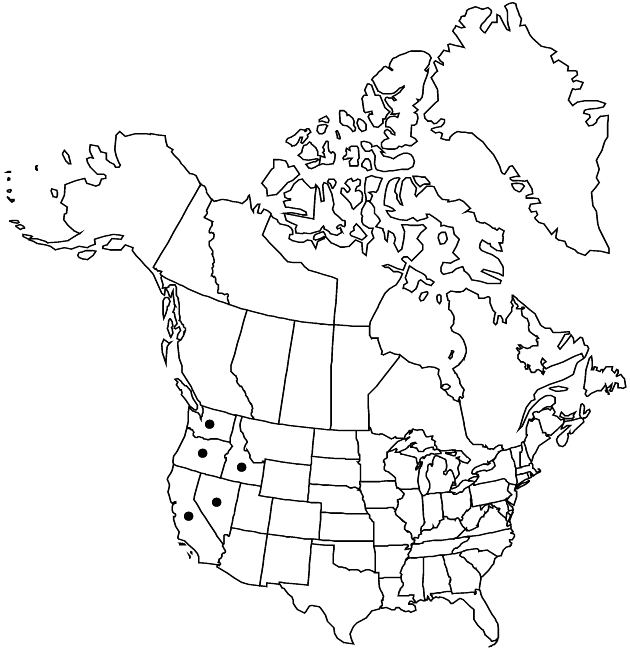Psilocarphus oregonus
Trans. Amer. Philos. Soc., n. s. 7: 341. 1840.
Plants silvery to whitish, densely sericeous to somewhat lanuginose. Stems (1–) 2–10, ascending to ± prostrate; proximal internode lengths mostly 0.5–1.5 (–2) times leaf lengths. Capitular leaves ± erect, appressed to heads, linear to narrowly oblanceolate, widest in distal 2/3, longest 12–20 mm, lengths mostly 6–12 times widths, (3–) 3.5–5 times head heights. Heads ± spheric, largest 4–6 mm. Receptacles unlobed. Pistillate paleae individually visible through indument, longest mostly 1.5–2.7 mm. Staminate corollas 0.7–1.4 mm, lobes mostly 4. Cypselae narrowly ± cylindric, terete, 0.6–1.2 mm.
Phenology: Flowering and fruiting late Mar–mid Aug.
Habitat: Seasonally inundated or flooded clay soils (vernal pool margins, drainages, moist rocky slopes)
Elevation: 10–1800(–2400) m
Distribution

Calif., Idaho, Nev., Oreg., Wash.
Discussion
Psilocarphus oregonus occurs from west-central California through most of Oregon to southeastern Washington, western Idaho, and northern Nevada. Relatively narrow-leaved, montane forms of P. tenellus account for reports of P. oregonus from the southern Sierra Nevada to Baja California; further study may show these to be intermediates between the two taxa.
A malformed plant collected in Merced County, California, appears to have been a sterile hybrid between P. oregonus and Hesperevax caulescens (J. D. Morefield 1992c).
Selected References
None.